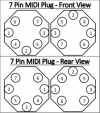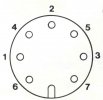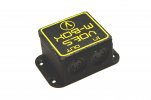I guess I was misunderstood in my posts. Yes, 3 conductors are the standard.I think you're not understanding the spec you posted. You'll notice in every diagram that only 3 pins are wired. Pins 1 and 3 are N.C. (not connected). The other 3 pins are RX, TX and GND.
The signal voltage is used for the actual midi transmission as far as I remember.
Bi-directional MIDI, has used the other 2 conductors available on the DIN connector...at least as long as I can recollect. And yes, Axe-3 does not afford that.




